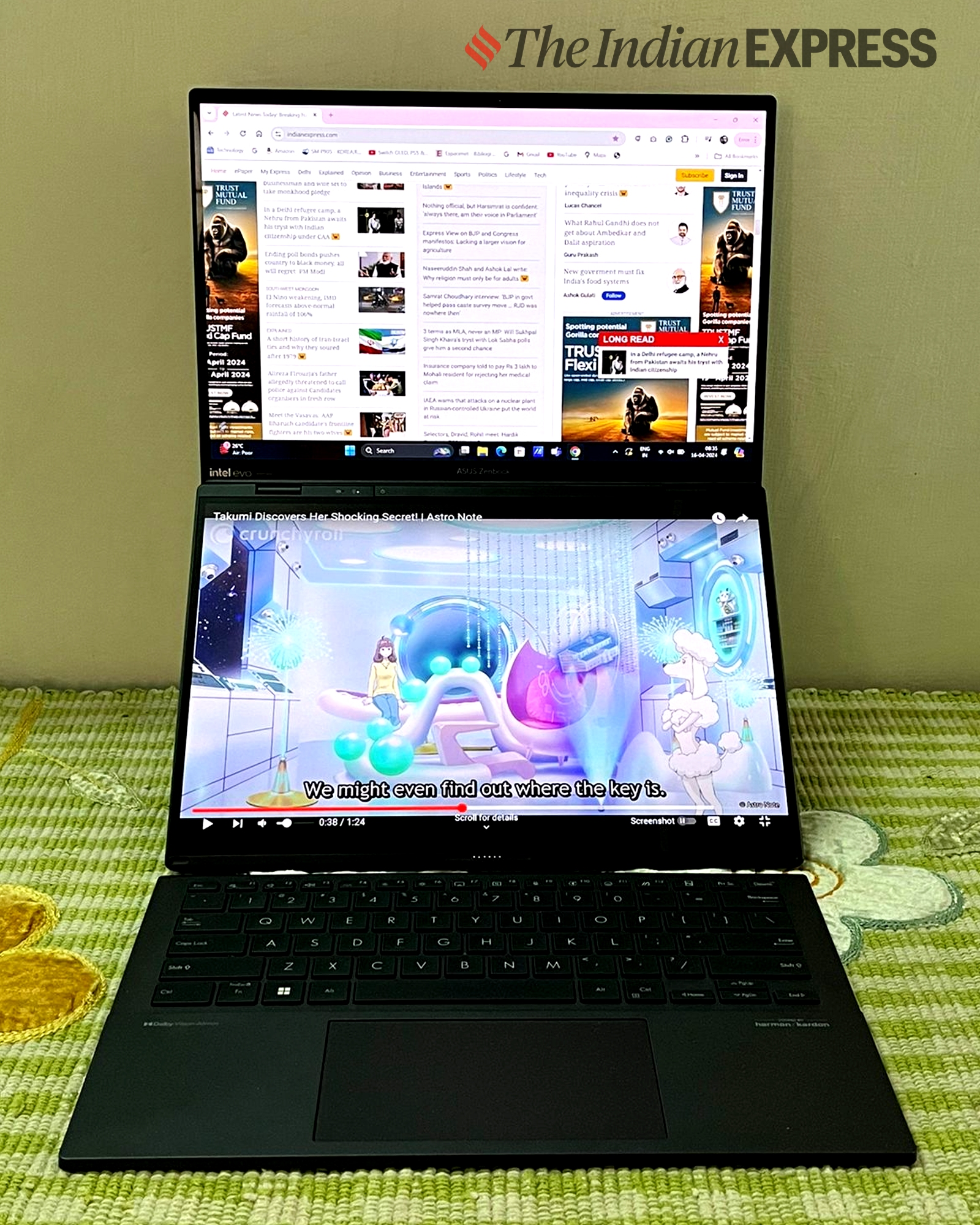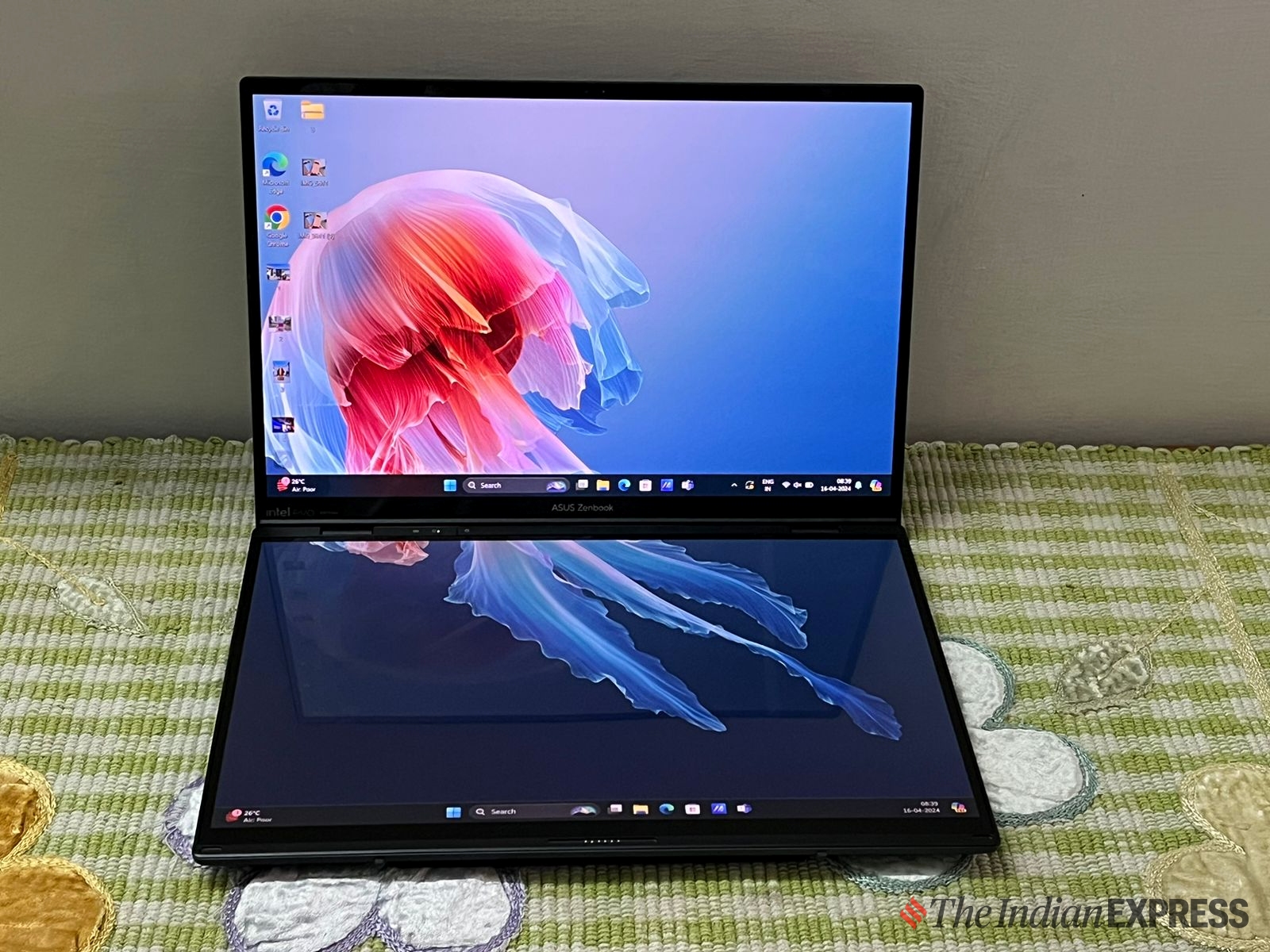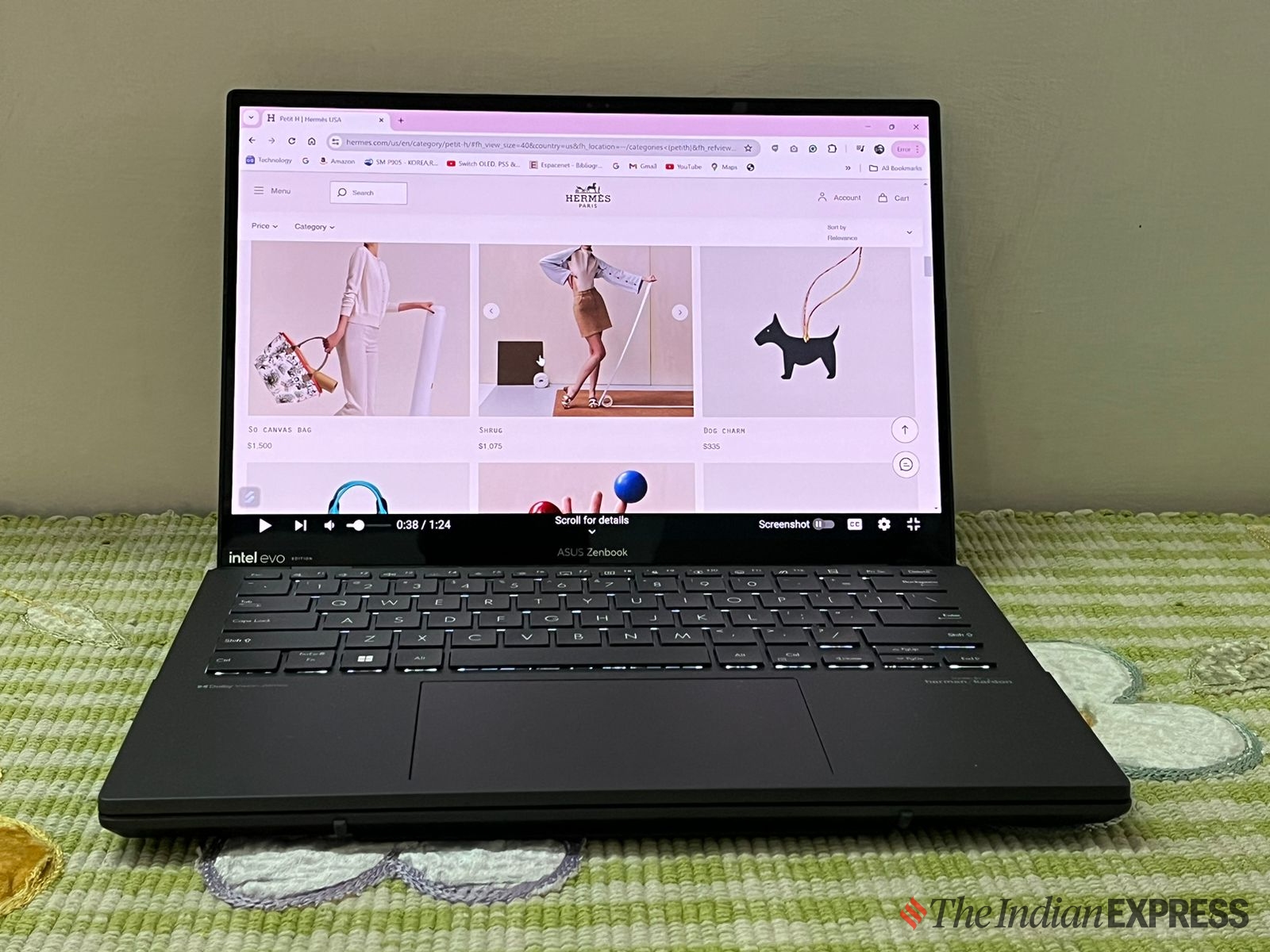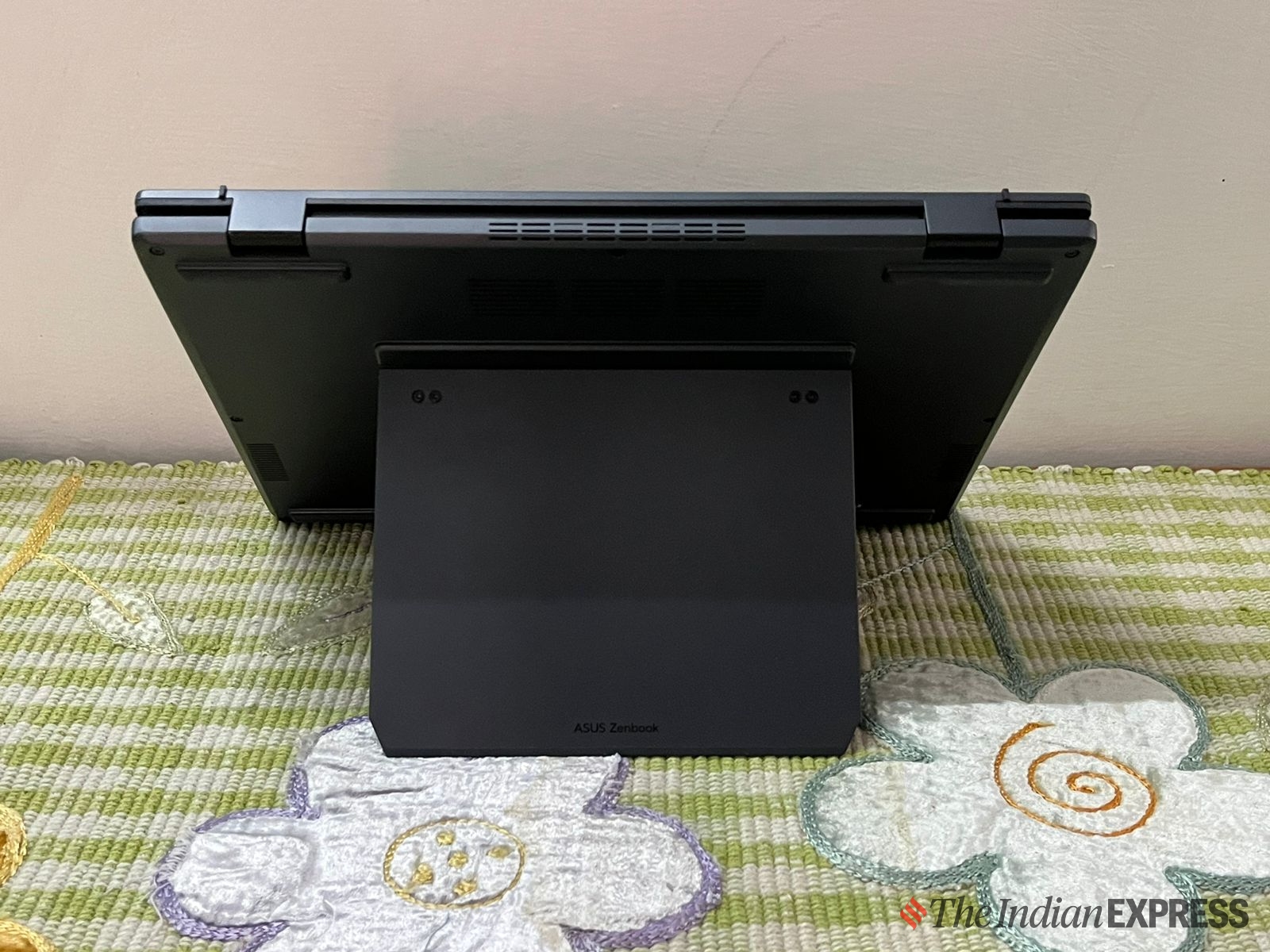I was in 10th grade when the Nintendo DS, a portable video game console with two screens, one above the other, was unveiled. Years later, I got my hands on the original DS and was blown away by the form factor and how dual screens elevate the gaming experience. The Nintendo DS and its successive iterations have remained the most successful experiments in mainstreaming the dual-screen concept. Others have failed to create a different experience with dual screens on mobile devices. But now companies like Asus are trying to revive the dual-screen concept by bringing it onto the laptop form factor. It’s a bold gambit for sure. However, the question remains: what will you do with extra screens and will they add any value to users? As someone who has seen the evolution of dual-screen devices, I was intrigued to test Asus’ ZenBook Duo. So, here’s my review after spending days with the dual-screen laptop.
I don’t juggle 100 tasks on my computer simultaneously. I take short breaks between work, as many writers do. If I’m not writing and working on a story, you will find me either reading a lot, playing with a new app or software, thinking, and of course, just staring at a screen. Therefore, more than processing speed, I am concerned about how I can maximise the form factor and do different things. I know it sounds weird, but this is who I am.
Interestingly, “where I work” doesn’t matter as much as it used to a couple of years back. For me, the size of the space doesn’t matter anymore. I am happy to work in a small compartment or a plane’s seat tray. My priorities have changed, and so have the computers.
Which is why I always look for portability in a computer. Some days I am working from home, some days the airport lounge is my workplace. Therefore, my rig needs to be able to work in all sorts of environments. I want to keep the gadgets to a minimum, especially if I am travelling. Therefore, I expect my computer to handle all sorts of tasks, and I am fine replacing multiple devices with one single device.
Dual-screen design isn’t a slouch

The ZenBook Duo looks different from other laptops on the market. However, you cannot notice the difference when the ZenBook Duo is closed. Once you open the device, turn it on, and the ZenBook Duo becomes a whole new notebook (more on that later).
The design of the machine is top-notch. It’s sleek, made of premium magnesium alloy, and comes close to an ultrabook in portability. Its squared-off edges and grey colour make it look industrial. Moreover, the notebook has passed the MIL-STD-810H durability test, which means it’s more than capable of handling day-to-day abuse. The chassis supports a bunch of ports including two Thunderbolt 4 ports, a USB 3.2 Type-A port, a full-size HDMI 2.1 port and a headphone jack.
More so, it easily fits on normal-sized train or plane seat trays. The notebook weighs 1.36 kg without the keyboard and around 1.66 kg with the keyboard. In fact, it measures 14.6mm thin without the keyboard and 19.9mm with it, so it’s not as heavy as you might think. The ZenBook Duo’s form factor won me over, and I wondered if maybe this is the right dual-screen laptop size.
But I have to tell you that the Asus ZenBook Duo isn’t the first dual-screen laptop. A few months back, Lenovo also launched a laptop with two screens, and despite similarities, both are distinct. The ZenBook Duo feels a lot more polished, and Asus got it right on getting the form right than what Lenovo did with the Yoga Book 9i. For example, Asus has included a kickstand on the back of the ZenBook Duo, while Lenovo includes a separate kickstand in the box. Another notable difference is how the two handle the keyboard on the devices. Not only is the keyboard on the ZenBook Duo full-sized but it also fits between the two screens, thanks to a wider hinge. This is a more elegant way of travelling with the ZenBook Duo, whereas, with the Yoga Book 9i, you have to carry around the notebook, a kickstand and a keyboard stacked on top of each other.
Dual-screen magic

At its core, the ZenBook Duo is a dual-screen clamshell touchscreen laptop that ditches the traditional keyboard design for a second touchscreen on the bottom half. That means it’s designed differently from traditional 2-in-1 convertibles – and bears no resemblance to Asus’ foldable notebook, which has a screen that folds in half.
The Duo is stacked with two 14-inch displays. They are both OLED, with resolutions of up to 2880 x 1800, aspect ratios of 16:10, and a maximum refresh rate of 120Hz. Between them, they offer a total of 19.8 inches of usable screen real estate. Both are touch-enabled, and both support Asus’ active stylus.
How good are the displays?
They are simply fantastic. Put aside all the different marketing names that Asus touts for the tech, and they will probably be the brightest and sharpest I have seen on a notebook. I watched the teaser of Joker: Folie à Deux, and the colours were rich and true to life. The sound coming from the speakers gets equally loud, with great stereo separation. It still won’t fill a room like a Bluetooth speaker, but it will impress anybody who is around when the music is playing.
How I used the ZenBook Duo

Having two separate 14-inch displays has its advantages, opening an entirely new way of how one uses a computer. This allows for more screen real estate to spread out your apps and do multitasking which isn’t possible on a single screen. In fact, there are different ways to use the ZenBook Duo. There’s a standard laptop mode, where the bottom screen is entirely covered by a removable traditional keyboard and trackpad. Or you can rest the keyboard on your desk and have the two screens arranged vertically for “Dual Screen” mode or horizontally for “Desktop” mode.
For most days, I used the ZenBook Duo’s extra screen to replicate a multi-screen monitor. This was possible due to the built-in kickstand under the bottom screen. That way, I could position the notebook with its monitors stacked on top of each other. Hands down, this might be the best implementation of a secondary screen on a portable notebook. As someone who does multiple tasks at the same time, editing copies and researching a story while also responding to messages on WhatsApp, the ZenBook Duo’s extra screen adds a new dimension to multitasking, and frankly, the idea of a dual-screen setup just works for me.
What I really like about the dual-screen setup is how the ZenBook Duo maintains the correct ergonomic monitor height, making it more comfortable to use two screens for a long duration. That means I don’t have to bend my head and neck to reach the eye level of the display. Thanks to the Duo’s kickstand, I no longer have to adjust angles to look straight into the webcam while taking Google Meet calls. The top display rests at eye level, while the other display functions either as an extension of the top display or can be used separately. Meanwhile, the keyboard can be lifted from the secondary display and used wirelessly. Typically, on any working day, the top display is where I write my stories using Google Docs, while I keep an eye on daily traffic on the bottom screen.
Asus has also made it easy to manage the screens with neat software tricks built on top of Windows 11. With its ScreenXpert app, one can use different shortcuts for docking windows wherever they want or move content from one screen to another. Then there are some handy gestures. Swipe down with six fingers on the lower display for quick controls, a touchscreen keyboard, and more. Tap with three fingers and you will get a floating touchpad for controlling the mouse. You can even swipe up with five fingers on an app to maximise it and fill your display with its content. However, I still feel that Windows 11 is not yet ready for a dual-screen notebook. There are a lot of use cases one can imagine with two screens stacked on top of each other; unfortunately, the software isn’t tuned to take advantage of dual screens yet.
Powerful specifications

This laptop is considerably more powerful than I ever thought it would be. My initial impression of the ZenBook Duo was that it would be more of a lifestyle computer, but I was wrong. It comes equipped with (at least the review unit I tested) Intel’s new Core Ultra 9 185-H, 32GB of RAM, 1TB of storage, and Intel Arc graphics. On top of that, the ZenBook Duo is an AI-ready PC, thanks to the processor’s dual neural compute engine, so machine learning and AI tasks are all possible. I have tested a lot of laptops lately, and few have wowed me as the MacBook Pro does. However, Intel’s new chips are supremely powerful, I must say. I could use the ZenBook Duo for productivity and intense creative workloads with a battery life that easily lasts for hours. With both displays enabled, I got 10 hours of battery life, which is fantastic for a dual-screen notebook. I have worked for hours on this laptop and completely forgot it wasn’t attached to a power outlet. The 75-watt-hour (Wh) battery inside is really helpful, and so is the 65W charger in the box, which will juice you up from zero to 50 per cent in 30 minutes.
However, I must add that the notebook does get a little warm. I want to specially call this out because I remember that after an hour of using the notebook, the ZenBook Duo got warm when I had only opened a few tabs of Chrome, YouTube, and WhatsApp Web.
Extra-ordinary keyboard

I am not a big fan of virtual keyboards. I have tried them on all types of devices, including foldables, 2-in-1 convertibles, and mobile devices like the Surface Duo. My experience using a virtual keyboard wasn’t good even though they have been massively improved and now span the entire width of the screen and come with a larger-sized trackpad. On the ZenBook Duo, the virtual keyboard is large and has haptic feedback, but it’s still not a great typing experience. However, the detachable physical keyboard that Asus bundles with the notebook is damn great. The keyboard attaches magnetically to the bottom screen and sticks to it. More importantly, the keyboard is positively delightful in everyday use. The feel is closer to a conventional keyboard found on modern laptops than on tablets and foldables. It’s stable and has enough travel. And yes, the ZenBook Duo keyboard has a trackpad which is large and feels clicky.
Should you buy the Asus ZenBook Duo?

My first impression of the ZenBook Duo was that of an unconventional notebook. However, after using it for a couple of days, my perception of this dual-screen notebook is a lot different. Typically, when I review a laptop, it boils down to how much you require top-spec performance and battery life. But that’s not how I see a device like the ZenBook Duo. This laptop is all about how you maximise productivity with two screens. It’s the form factor that allows you to do more, and that’s where I think Asus has nailed it. That being said, if you are considering the ZenBook Duo, appreciate its dual OLED screens, excellent keyboard, and decent performance as well.






